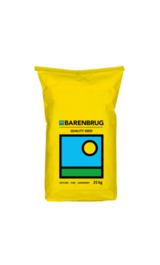Balansa clover is well adapted to most soils in the pH 5.2 to 8.0 range, but not deep sands. It is highly tolerant to water logging and has tolerance of mild salinity. It is an effective substitute for sub clover in the right conditions. Balansa is very hard seeded which is useful with cropping phases and harsh summers. Grazing the pasture during summer and autumn will help soften the seed and improve germination. Take care not to overgraze perennial species in the pasture.
Balansa clover is semi erect in its growth habit and has proved very satisfactory as a monoculture or as a companion with short term grasses. Balansa clover is well adapted to most soils in the pH 5.2 to 8.0 range, but not It is highly suited to hay production. It is an aerial seeder, so deferring grazing during flowering and seed set is necessary to create a good seed bank. This is critical during its first year for regeneration in future seasons.
Paradana
- Annual regenerating clover
- Mid season maturity – approx 120 days to flowering
- Tolerates water logging and mild soil salinity
- Sowing rate: 2-6kg/ha (Pure) 1-2kg/ha (Mixes)



